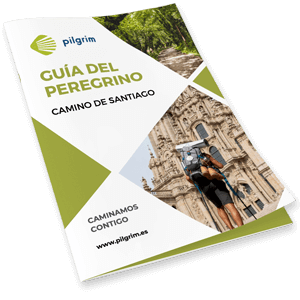Camino Finisterre / Muxía

Have a Good Way!
Why choosing the Way to Finisterre?
Being an end of the Jacobean Way, it is possible to leave from Santiago directly to Finisterre and then continue to Muxía or make the opposite way. The choice is in your hands! The signposting is in good condition, with the first shell located in the Compostela park of San Lorenzo.
You will probably come across a pilgrim walking in the opposite direction, don’t be afraid! This may be because they have chosen to do this section in reverse, as described above. Once in Finisterre or Muxía, we will also have no problems in orienting ourselves in one direction or the other. Nowadays, many pilgrims decide to visit the wonderful Costa da Morte.
5 Stages / 119 Kms
Stages of the Camino de Santiago to Finisterre on foot
You will like this way, if you like…
Cities and towns

Santiago de Compostela

Negreira

Olveiroa

Cee

Fisterra

Muxía
More Information…
About the Way to Fisterra
History
Fisterra, from the Latin finis terrae, has its roots long before the birth of the Jacobean route. It is here where many academics believe they can connect the ancient city of Dugium with the famous Atlantis and where the Celtic tribe of the Neri settled, from the south of the peninsula and neighbors of the Artabrian people. The choice of this area was not by accident because,until well into the Middle Ages, Cape Finisterre was believed to be the last bastion in the world as they knew it.
Thus began to proliferate a multitude of settlements and cults to the sun god, which every day resurfaced from the waters of the Atlantic. It is believed that there was even an important altar and spiritual center in honor of the star king, the Ara Solis, a temple to which both Celts and later Romans attended. According to legend, it was the Apostle himself who ordered the destruction of this temple, considering it a pagan cult. Because of the refusal of the people, a great flood finally destroyed the Ara Solis and devastated the entire village, saving only two oxen that escaped from the place. Their fate would quickly change as these were transformed into stone as punishment, forming the present islands of Bois de Gures.
Also the disciples of St. James were here, specifically in Duio, asking for permission to give rest to the remains of the Apostle. Faced with the confusion and distrust of the governor of the area, they were jailed but they managed to escape and set a new course for Iria Flavia.
So, the only route that departs from Santiago is not a modern invention as many people may think. Recent excavations in the hermitage of San Guillermo have demonstrated their close connection with the Apostle and with other much older traditions and cults.
As with Finisterre, the nearby town of Muxía can also boast of witnessing the miracles related to the Apostle. This is where the story goes to Santiago, who, after having ordered the destruction of the Ara Solis de Fisterra, decided to retire to this area to reflect and try to win the favor of its inhabitants preaching their faith.
The legend says that while he was meditating on the rocks where the sanctuary is today, he saw a boat approaching with the Virgin Mary, encouraging him to continue preaching the word of the Lord. It is believed that this same boat could be the so famous stone of Abalar, being joined by the stone dos Cadrís (the sails of the boat) and the one of the Timón. Currently, there is a belief that the one who manages to pass nine times under the cadris stone will be cured of all his back and kidney ailments.
Distances and elevation
Profile of the Way to Fisterra

There are many other routes, take a look below at the best alternatives:
Other recommended routes
804 km / 35 days
119 km / 6 days
764 km / 33 days
263 km / 10 days
115 km / 5 days
620 km / 25 days
Useful Information
Frequently Asked Questions about the Way to Finisterre
As reflected in the stage section, the Way to Finisterre is made up of a total of 4 stages over a distance of 90 km starting from Santiago de Compostela..
If your goal is to achieve the Compostela, on this route you won’t be able to get it as it is the only route that starts from Santiago de Compostela. In any case, if you do the Camino to Finisterre, once there they give you a certificate that you have completed the distance from Santiago to the end of the world..
Its distance is very short and without a doubt, the best of this Camino are its final destinations, both Muxía and Finisterre are towns with a great history and very connected to the Christian religion.
The Way to Finisterre is the only route that starts from Santiago de Compostela. Finisterre is so called because, in Roman times, it was considered the end of the world..
In Pilgrim.es We have the most complete information about this way and many more. Enter our website and discover all the routes that make up the Camino de Santiago, its stages, maps and even the towns with their indications about what to see in each one.
Learn more about us
Helping pilgrims since 2019
Pilgrims
+54.000
Nationalities
+45
Google Rating
4,7 ★
Affiliated businesses
+7500

